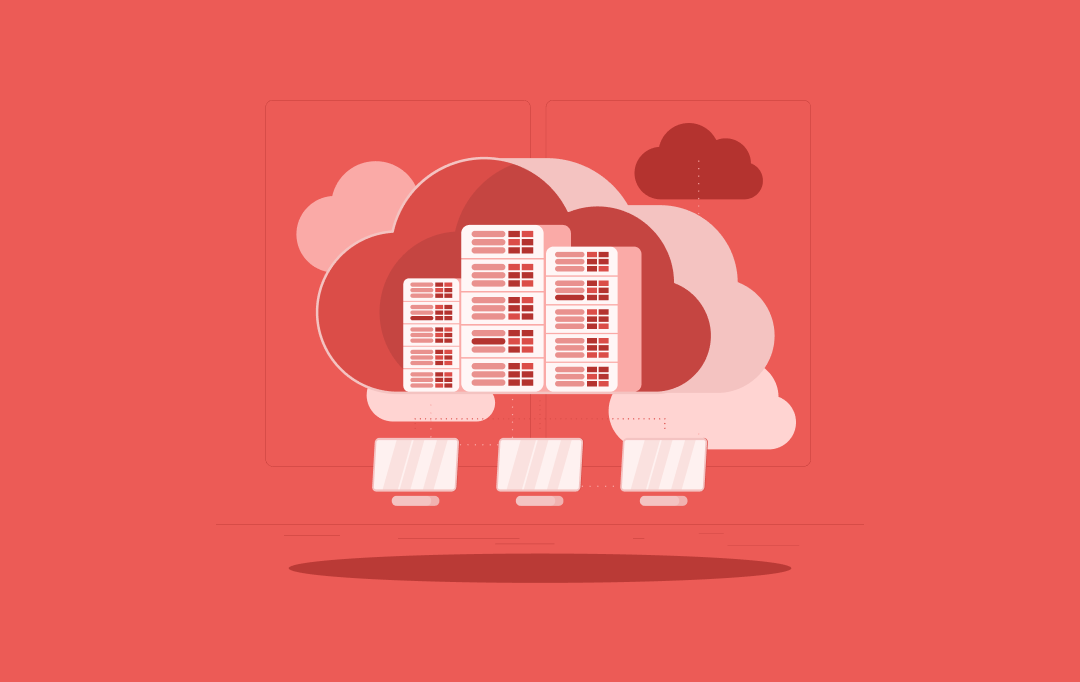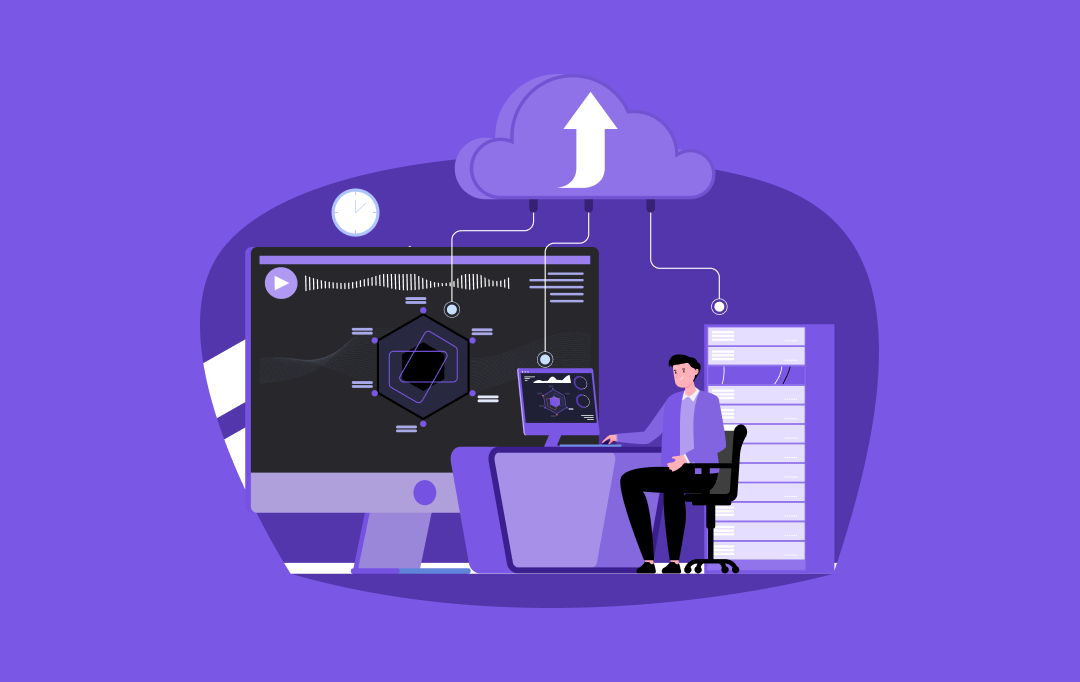- What is serverless architecture?
- The elements of serverless application architecture
- How does serverless work?
- The business benefits of serverless architecture
- Reduced costs
- High scalability
- Fast deployments and updates
- Decreased latency
- Easy operations management
- Improved pivoting
- Real-world use cases of the serverless architecture
- Netflix
- Nordstrom
- Coca Cola
- Zalora
- Serverless architecture examples
- 1. Web app architecture
- 2. IoT backend
- 3. SaaS software
- 4. Mobile app backend
- When and when not to use serverless computing?
- When to use:
- When not to use:
- How can Appinventiv help make your business model serverless?
- Parting Notes
- FAQs
The application development industry is on a constant lookout for new ways to make the development process efficient and their outcomes valuable to the end users. One of those efforts is serverless architecture.
Serverless application architecture – the buzzword which has been doing the rounds in the cloud ecosystem for a long time now – comes with a range of benefits when compared to the traditional server-based infrastructure. Benefits like better scalability, higher flexibility, faster time to release, and a cost-effective mode of software development.
But in order to truly use these advantages it is important to understand what is serverless computing, how does serverless work, and the benefits of serverless architecture in detail. We will discuss these and several other facets of the cloud computing model in this article today.
What is serverless architecture?

Serverless computing is a model where backend services are provided on an as-used basis. The serverless provider enables users to write and then deploy code without the worry of the underlying infrastructure. So, when your business takes backend service from a serverless vendor, you are charged on the basis of computation where you do not have to pay any amount for server number and bandwidth. Since the model is a part of cloud service, it stands true to its ‘pay-as-you-use’ essence, where developers only need to pay for services they make use of.
Before we go any further, let’s be honest about one thing. The terminology ‘serverless’ is fairly misleading. Servers will always be involved in providing backend services, but since they are handled by the providers, developers don’t have to worry about them. So, it is as good as being ‘serverless’ for them.
The elements of serverless application architecture
Now that we have established that serverless computing is not entirely serverless, let us look into its components that are a must-have for cloud-based application development.
- FaaS solution – It is one of the most crucial elements of serverless computing architecture. These functions make it possible for developers to build, run, deploy, and maintain applications without thinking of server infrastructure.
- Security token service – The serveless users make use of the API provided by the providers to log into the system and use its many services. This serverless architecture should be designed to make a security token for every user before the API access is triggered.
- Database – Even if the app gets developed and managed on a serverless computing architecture, the data it has would need to be stored in a database. Thus, a robust database becomes a major part of the architecture.
How does serverless work?

Developers depend on serverless cloud computing to work on specific functions. Thus, the model is generally offered as Functions as a Service (FaaS). Here are the ways functions are written and executed in serverless computing.
- The developers write a function. This function typically serves a specific need within the app code.
- Developers then define an event. This event is what pushes the cloud service provider to execute a function. Generally, HTTP request is used as a common type of event.
- The event gets triggered. If the event is an HTTP request, the user triggers it through a click.
- The function gets executed. The cloud provider checks if the instance of the function is already operating. If not, it kickstarts a new instance for the function.
- The result gets sent to the user. The user gets the result of their function in the application.
The business benefits of serverless architecture
There are a number of advantages that come associated with partnering with a cloud computing services provider for a serverless architecture integration. Let us dive into them in this section.

Reduced costs
For any software project, human resource and infrastructure are the two main cost elements. Through its pay-as-you-use model, serverless architecture is able to bring the infrastructure cost extremely down. Imagine your startup website has less than 1,000 visitors. When you switch to a pay-as-you-go model, you will be able to cut up to 90% of the backend resource and maintenance costs.
On the other hand, since the businesses are able to now focus on building solutions instead of maintaining infrastructures, their ROI also increases. The result? Reduced cost across all major operations.
Some examples of this can be seen through –
- Heavywater spent $30 in place of $4,000 for their backend maintenance once they chose serverless architecture.
- Nordstrom used serverless’s high scalability and cost-reduction feature by using it for their high-traffic web apps.
- Postlight after dealing with huge backend expenses moved to serverless, which lowered infrastructure costs from over $10,000 to only $370 a month.
High scalability
Serverless apps are able to scale up or down as the user grows or usage decreases. When a function has to be run on multiple instances, the servers start, run, and end as and when needed through the help of containers.
Due to this, the serverless application is able to handle large numbers of requests while making it seamless to process even a single request coming in from one user and ones coming in from thousands of users. This is why businesses which tend to prioritize traffic prefer serverless architecture for the scaling power.
Fast deployments and updates
When working on a serverless infrastructure, there is no need for uploading code to the servers for any backend configuration needed to release an application version. The developers can quickly upload codes and release the version.
What this translates to for a business is that there’s no need for the team to look out if the update was rolled out across devices. The moment you add in a new business feature or technology, every single customer of yours will be able to access it in almost real-time.
Decreased latency
The fact that serverless apps are not hosted on any origin server, makes it possible for the code to be run from anywhere. Thus, depending on the provider, it becomes equally easy to run the app functions from servers that are closer to the end users.
This process lowers latency as your users’ request does not have to travel to the origin server, thus making the data transmission and process time very low.
Easy operations management
Traditionally, legacy systems have given infrastructure for company’s software expansions. Being notoriously famous for holding innovation back, the dependency on legacy systems has been detrimental to the business disruption efforts.
By adopting serverless architecture, the only thing businesses have to think about is innovation since all the infrastructure needs are handled by the providers.
Improved pivoting
The implementation and maintenance is a lot easier on a serverless architecture compared to the traditional methods. Now, it is not uncommon for businesses to realize that they have been targeting the wrong people or their product has reached a growth rut.
This is where serverless architecture comes into the picture. It allows businesses to innovate faster and see the results of change more expeditiously.
When you are not bound by time and resources, startup owners get to pivot more freely as a company, which in turn, comes with its own set of benefits.
Real-world use cases of the serverless architecture
In order to truly understand the extent of serverless capabilities, it is important to know how companies, across sectors, are benefitting from the technology.
Let’s take a look at a few.
Netflix
Powered by AWS Lambda, Netflix media encoding process has been automated by event-based triggers.
The serverless architecture makes it easy to publish content as well. The media giant gets hundreds of files from publishers every day, and every one of these files have to be sorted and encoded before they are delivered to the user. For this, AWS Firebase creates and pushes an event once the files are uploaded to S3 for calling the Lambda function. This divides the video in 5-minute parts that are then encoded in 60 different streams needed by Netflix. Finally, with the help of a number of events and rules, the final portion of the video gets aggregated and deployed.
Additionally, the architecture is able to alert and shut down unauthorized access. Netflix is also able to identify the reason for an issue when something is wrong, with the help of Lambda’s continuous file verification.
Nordstrom
The popular department store based in Washington is known to always be at the center of retail innovation.
Now, instead of using data-based applications, they have moved to event-based by creating an open-source serverless architecture store known as Hello Retail.
The app, based on AWS Lambda, helps Nordstrom showcase how they make use of Kinesis and other AWS services. Event-driven, immutable, and distributed ledger based, the app is completely made of serverless components.
Coca Cola
Soft drink giant Coca-Cola first experimented with serverless technology through its vending machine. And now, they have started immersing their business model entirely on the model.
Here’s how its serverless vending machine works.
When a beverage is bought, the payment structure calls on to the AWS API Gateway and initiates an AWS Lambda function to finish the transaction. Since the vending machines are supposed to communicate with the headquarters for marketing and inventory needs, this ability of pay per request instead of operating at full capacity leads to a better insight into what the consumers are demanding.
Zalora
In order to serve more than twenty million customers, Zalora fashion stores depend heavily on serverless technology.
AWS is helping the chain ensure that every customer gets a positive experience when making a purchase from their website. By merging the capabilities of Lambda and AWS, the brand is able to ensure that they don’t encounter any issue when scaling the request count.
Serverless architecture examples
There are some genres of serverless cloud computing applications that are being used across industries for quite some time. Here’s what they are –
1. Web app architecture
When it comes to web architecture creation, the cloud provider helps you create the API to connect with the cloud services. Everything beyond this point is as simple as logging in the account and running codes.
Additionally, building a single-page application becomes easier with a serverless architecture. Since these pages are lightweight, have limited dependencies, they make the perfect case for going serverless.
2. IoT backend
Managing IoT devices’ servers can be difficult when you have tens of apps connected to it. Serverless architecture makes it possible for developers to focus on creating rules which trigger database search for specific devices, device registration logic, activation code when the device is requesting access – all minus any downtime.
3. SaaS software
Building SaaS software is about the ability of handling fluctuating service load in terms of customers and tasks. Typically, accounting for the ever-changing market demand has been a challenge for solution architects. Through serverless architecture, it becomes easy because of automatic scaling up features that backs constant innovation and fast deployment.
4. Mobile app backend
A crucial aspect of a serverless architecture is the capability to offer different environments effortlessly. Through serverless architecture, developers are able to build native apps’ backend, which makes performing tasks easy when the users call serverless functions which are rendered by the cloud vendor.
While these are four use cases out of many serverless architecture examples, choosing if serverless is the best decision for your business can be challenging, especially since it comes with drawbacks like – architecture complexity, lack of control, limited tools for managing and debugging, etc. Let us help you come to a conclusion with basic when and when not pointers.
When and when not to use serverless computing?
Here are the pointers which would help you decide if going serverless would be the best choice for your business.
When to use:
- You want to develop effective solutions rather than maintaining infrastructure
- You want to reduce development costs without affecting quality
- You want automatic scaling up without getting involved in complexities
- The apps have unpredictable server load
- The apps are designed to be frequently changing
When not to use:
- When your real-time app uses WebSockets as the FaaS functionality come with limited lifetime
- If you need a quick response from the server. In serverless architecture, functions tend to go cold when left idle, making it necessary to manually invoke the functions.
The solution to these issues lies in adopting a hybrid approach where a FaaS function is employed in pilot and an integration is made between BaaS and FaaS. And from here, the model should be expanded across bigger use cases before the entire software development process is revamped.
McKinsey explains this new paradigm perfectly through this diagram –

How can Appinventiv help make your business model serverless?
At Appinventiv, we help businesses, across sectors and geographies, create digital products and scale their business offerings. Lately, a key part of that process has been using serverless applications. Here’s how we employ the serverless model in a business.
- We begin by understanding your business objectives and collecting requirements.
- Next, we find a technology stack which would be best suited for the serverless model.
- Then, we offer you a development plan where the estimates and deliverables are finalized.
- We then go to the system architecture designing stage where the documentations get written.
- In the end, we set up a data storage environment on the Amazon S3 bucket or the Amazon Redshift data warehouse cluster. In order to achieve that, we build functions on your website and deploy them.
Parting Notes
Serverless architecture offers benefits to both business owners and developers. It doesn’t just free developers’ minds from infrastructure management but also helps business owners better their service scalability, increase stability, and speed the time to market. However, adopting the model in a traditional IT system can be challenging and would need a milestone-by-milestone approach. This is where Appinventiv’s cloud managed services come into the picture. We help you embrace the power of serverless without letting it affect any business operation.
Get in touch with the Appinventiv team to initiate the journey.
FAQs
Q. Why is serverless architecture preferred in the cloud?
A. Serverless architectures come with a range of benefits when compared to the traditional server-based infrastructure. Businesses can leverage benefits like better scalability, higher flexibility, faster time to release, and a cost-effective mode of software development with serverless architecture in the cloud.
Q. When should businesses opt for serverless architecture?
A. You must choose serverless architecture if:
- You are looking to reduce server costs. Going serverless will significantly reduce server costs.
- You want to free up developer resources. …
- You are looking to scale your business cloud based web application
- You want to develop effective solutions rather than maintaining infrastructure
- You want to reduce development costs without affecting quality
- You want automatic scaling up without getting involved in complexities
- The apps have unpredictable server load
- The apps are designed to be frequently changing
Q. How can I save costs if my cloud based application is serverless?
A. when your business takes serverless architecture as a backend service, you are charged on the basis of computation where you do not have to pay any amount for server number and bandwidth. Since the model is a part of cloud service, it stands true to its ‘pay-as-you-use’ essence, where you only need to pay for services you make use of.
Q. What are the top examples of serverless architecture for apps?
A. AWS Lambda, Microsoft Azure Functions, Google Cloud Functions and IBM OpenWhisk are all well-known examples of serverless services. To gain more detailed insights, you may partner with a reliable cloud computing company to guide you throughout the process.


- In just 2 mins you will get a response
- Your idea is 100% protected by our Non Disclosure Agreement.

How to Build a Robust Multi-Cloud Strategy for Future Readiness
Key takeaways: Multi-cloud adoption is growing and 76% of enterprises have already embraced multi-cloud environments. Avoiding vendor lock-in is a major driver for businesses moving to multi-cloud strategies. Cost optimization and enhanced security are key benefits of multi-cloud adoption. Businesses must align their multi-cloud strategy with business objectives for scalability, security, and innovation. Seamless integration…

How Cloud Analytics Helps Businesses Make Data-Driven Decisions Faster
Key takeaways: Cloud analytics accelerates decision-making by offering real-time insights and scalability. Businesses gain cost efficiency, enhanced agility, and improved accuracy with cloud analytics. Leveraging AI and big data empowers faster, smarter decision-making in industries like e-commerce, healthcare, and finance. While implementing cloud analytics, businesses face challenges like data security and integration, but there are…

Transforming Legacy Systems with Cloud Migration: The Whys and Hows
Key takeaways: Legacy systems hinder innovation, security, and agility, making cloud migration a strategic imperative. A successful legacy to cloud migration hinges on careful planning, choosing the right strategy, and robust execution. Benefits of cloud migration for legacy systems include enhanced scalability, fortified security, and significant cost optimization. Industry-wide use cases demonstrate the transformative power…

















